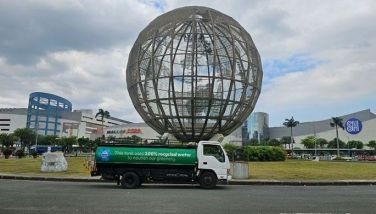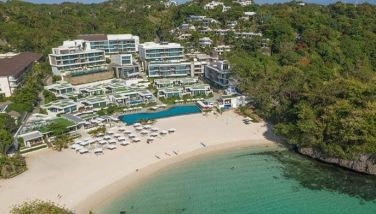Trainspotting in Tutuban

I got a lot of feedback from my article on Tutuban a few weeks ago. It seems that trains bring out childhood memories and the child in us all. This is evidenced in two e-mails I take pleasure in reproducing this week. One is from a precocious six-year-old who loves trains, and the other is from a surgeon in his eighties who reminisced about the prewar years.
* * *
First, we hear from a little tyke:
Dear Mr.Alcazaren,
I am Kamaal Pongco. I am six years old. I read your article about the PNR. Papa helped me with the big words. I like the picture of the old Tutuban Station the best. I have pictures of Tutuban Station, too. I went there last May with my Mama. Can you please write more articles about trains and train stations?
Of course, I will, Kamaal — in the future. Our youngest son, Juancho, is also a train fanatic, thanks to Thomas the Train. Kamaal attached a link to his blog, which contains several pictures, some of which are reproduced here, from an outing with his Mama Teacher and Papa Teacher (he is home-schooled).
He accompanied the images with a narrative (helped by his teachers): “Today, Labor Day, Mama Teacher knew that Papa Teacher would have appreciated a morning of peace and quiet in the house, so the little boy got shipped all the way to Tondo for some train-watching in Tutuban. We walked from the LRT, through Doroteo Jose, Masangkay, Padre Algue Streets, all the way to Tutuban. Just beyond the gates of the terminal compound sits a very old steam engine — so big, I was no taller than the wheels.
“This small locomotive has the nameplate ‘Dagupan’ on both sides, signifying the city of Dagupan which was, once upon a time in 19th-century Philippines, the other terminus of the train line that started right here. I was thrilled to be reminded that we’d just been there to Dagupan.
“After visiting the new Tutuban terminal, we walked a little bit south to the old one, now a shopping mall called Tutuban Center Mall. This is one restoration project that got it right! Everything but the train tracks is adapted to modern commercial use without sacrificing the visual history. The original bricks, arches and heavy wooden doors are still there.”
Thank you to the Pongco family for permission to reprint Kamaal’s e-mail and pics. He is lucky to have two-on-one home-teaching. This is literally a hundred times better than the ratio of students to teachers even in private schools.
* * *
Now from a slightly older reader:
Dear Mr. Alcazaren,
I read your nostalgic account of the old Tutuban Railroad Station. I am in my early eighties, a UP Medical School graduate, Class ‘54. I can’t help e-mailing you about my childhood days.
My late father, Lucas C. Arcilla Sr., was from Apalit, Pampanga. He was the maitre d’hotel of the old Manila Hotel, when it was still run by MRR. Every year, he would take us to Apalit, Pampanga, for the town fiesta. With six of us children in tow, he’d take us to the Tutuban Railroad Station to take the train up to the Apalit Station. We’d make stops along the way, passing through all the Bulacan towns. At Calumpit, the town before Pampanga, vendors would shout, “ensaymadang Malolos!” and “balut, penoy,” which were the delicacies of the town. That was before crossing the imposing steel Calumpit Bridge just before the town of Apalit.
This was in the ‘30s. We would also go all the way to Damortis, which was the end of the railroad line. In those days, there were cars that would take us up to Baguio City. I can still clearly recall the sound of “toot-toot!’ and the “chug-chug” of the wheels of the train. What nostalgic memories!
During the Japanese Occupation, my uncle and I would go early in the morning to meet the “bagols” (cargo freights) and haggle for the rice and corn being brought to Manila. What struck me most was the photo of the old railroad station and the sidewalk fronting it, Azcarraga, now called Recto Avenue.
In Singapore, the streets have retained their English names as a remembrance of their colonial past. Today, practically all our streets and avenues are named after local city officials and what-have-you.
We lived in Ermita then, and I am glad they have not changed M.H. del Pilar and A. Mabini Sts. Isaac Peral (now UN Ave.) used to be shaded by huge acacia trees that lined both sides of the street, shading it from the sun. I am glad, though, that historical Padre Faura St. has not been changed.
We were all born in Ermita, just a block away from Dewey Blvd. (I refuse to call it Roxas Blvd. to this day.) Roxas, wanting to be the first president of our republic (as promised by our constitution), should have postponed our independence for we were a ravaged country, the worst hit next to Warsaw, Poland. The bombardment leveled Manila. I was then 18 years old, and a number of my relatives were killed, bayoneted by the fleeing Japanese Marine stragglers.
I personally saw the bombardment of the Philippine General Hospital. Two of my sisters — Angelina, an intern, and Elisa, a nurse — were at the basement of the hospital with many other doctors, nurses and hospital employees. Thank God, the bombardment spared them. They were eventually liberated and sent to different PCAUs, improvised hospitals in different parts of the city for the injured civilians.
When the US Army lst Cavalry liberated Makati and Sta. Ana districts, the famous Sta. Ana Cabaret was converted into a first-aid station for injured soldiers and civilians. The medical officer of the lst Cavalry noticed that I knew how to treat and dress war wounds (I had taken a first-aid course at the old Makati Municipal Hal, so when his unit started to leave for the city I volunteered as a corpsman. I was made to wear a Red Cross armband and joined the unit.
Along Herran St. (now Pedro Gil), we trudged corner by corner and cowered when we heard the “pick boom” sound of the rifles of Japanese snipers. Along the way, I saw dead civilians, all skin and bones due to beri-beri, the dreaded vitamin B deficiency citywide, along with dead Japanese soldiers. Some American GIs would not even duck when they heard sniper gunfire — one said he wanted to get hit and be sent home. They were that exhausted.
Back to the post-war years. In an article written by Preciosa Soliven many years ago, she concurred with me that Roxas should have postponed our Independence and let America rebuild our country ahead of Japan. Why, we had only a few heads of carabaos left to till our land. We could’ve been mechanized, and become more productive agriculturally and industrially.
— DR. CHRIS ARCILLA
Thank you, Dr. Arcilla, for your fascinating e-mail. I e-mailed him back and we have since been corresponding because of school connections — as it turns out he knows my folks, both of whom are also UP Medical School alumni (1952). Also, I wrote him about my interest in his father’s stint with the Manila Hotel. He wrote back several times with stories of the hotel and of Taal Vista Lodge, where his father became general manager after the war. I will reserve those stories for a future column.
* * *
Feedback is welcome. Please e-mail the writer at paulo.alcazaren@gmail.com.




















